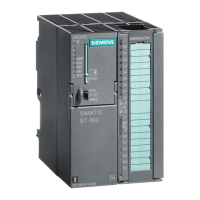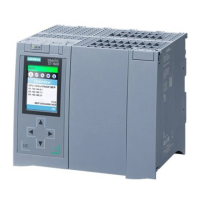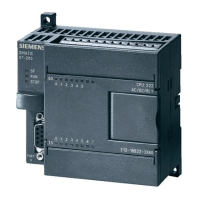Configuring the Ethernet CP with STEP 7
3.3 Setting further CP properties
Configuring and commissioning S7 CPs for Industrial Ethernet
Configuration Manual, 09/2013, C79000-G8976-C182-13
51
●
NTP mode (NTP: Network Time Protocol)
In NTP mode, the CP sends time queries (in client mode) at regular intervals to NTP
servers on the subnet (LAN). Based on the replies from the server, the most reliable and
most accurate time is calculated and the time of day on the station is synchronized.
The advantage of this mode is that it allows the time to be synchronized across subnets.
In this case, any MMS time messages that are received will be ignored.
Note
Note the following about time
ofday synchronization in NTP mode:
If an NTP frame is detected by the CP as "not exact" (example: NTP server is not
synchronized externally), the CP does not synchronize itself and does not forward the
tim
e on the communication bus (K bus). If this problem occurs, none of the NTP servers
is displayed as “NTP master" in the diagnostics; but rather all NTP servers are displayed
only as being "accessible".
The IP addresses of up to four NTP servers need to be configured. The update interval
defines the interval between the time queries (in seconds). The value of the interval
ranges between 10 seconds and one day.
In NTP mode, it is generally UTC (Universal Time Coordinated) that is transferred; this
corresponds to GMT (Greenwich Mean Time). The time offset from UTC can be set by
configuring the local time zone.
Note
No automatic changeover to daylight saving is defined in NTP. As a result, you may need
to implement this changeover using a program applicat
ion.
Special features - CPU requests time of day
Some CPUs provide the option of requesting the time of day automatically from an NTP
server. If this option is used on the CPU, you should disable the forwarding of the time of day
to the station on the CP. This avoids the time of day acquired by the CPU from the NTP
server being overwritten again by the time of day received by the CP. Forwarding over the
CP might result in a lower degree of accuracy.
In the extended NTP configuration, you can create and manage additional NTP servers
including those of the type NTP (secure).
Note
Ensuring a valid time of day
If you have enabled security, a valid time of day is extremely important. If you do not obtain
the time
-of-day from the station (CP
U), we therefore recommend that you use an NTP server
of the type NTP (secure).

